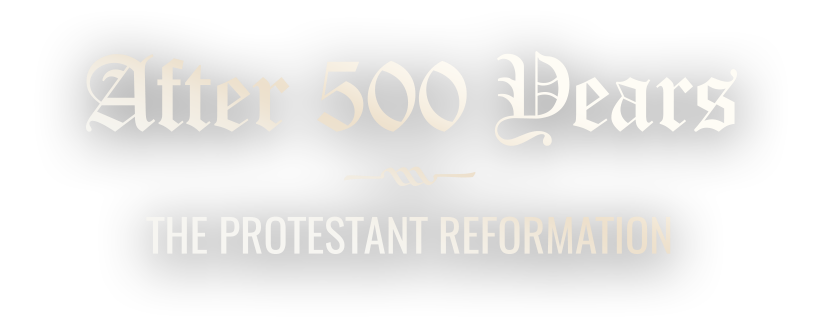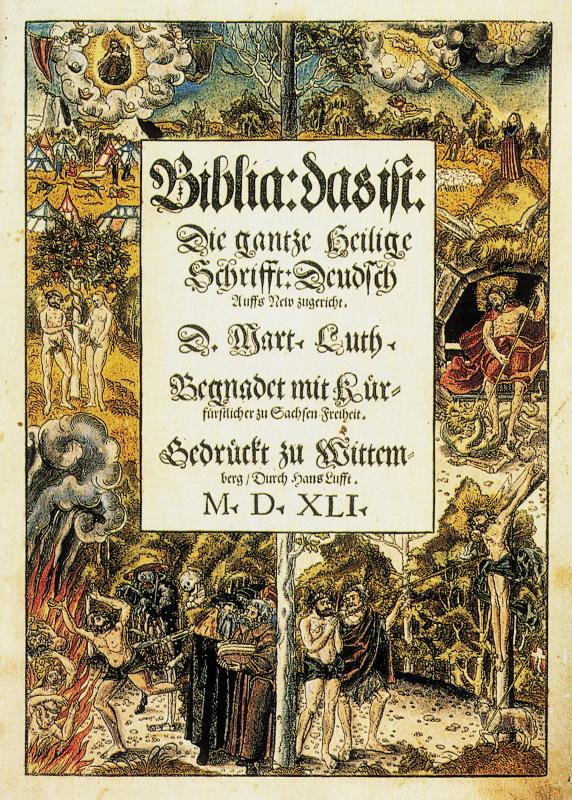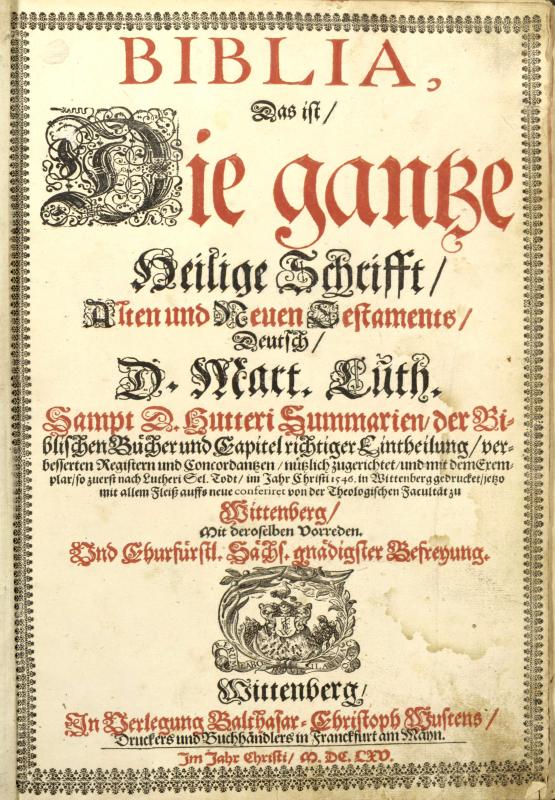The Bible, Pre- and Post-Reformation
Complete Latin Bibles were coveted possessions to which principally chapter and monastic houses had access. Luther recorded that he first encountered a Bible in the library of his order’s house in Erfurt. He borrowed it, consumed it hungrily, and was enthralled.
During the late Middle Ages, mendicant friars already labored to revise and correct the Vulgate. After them came the humanists who collectively made up that late-medieval cultural movement that we call the Renaissance. Italians, with their allegedly more secular bent, continued their predecessors’ close examination of St. Jerome’s ancient Vulgate translation into Latin. Before they could formulate critical judgments that met their more exacting standards, however, they needed to learn ancient Greek, a facility disseminated within the peninsula from roughly the turn of the fifteenth century. Now such scholars could truly pursue the Gospels ad fontes, to the oldest surviving manuscripts. Lorenzo Valla (1407-1457), whom Jerry H. Bentley has called “the first westerner since the patristic age to enjoy a thorough knowledge of Greek and to apply it extensively in the study of the New Testament,” wrote a critique of Jerome’s rendering, “Annotations on the New Testament Collected from Various Codices in Each Language.” After its printing in 1505, this title circulated in northern Europe too and was known to Erasmus, Luther and other biblical experts there.
During the high and late Middle Ages, wealthy people, including women, took pride in biblical portions, such as books of Psalms, that were hand-copied in the vernacular as well as Latin and served as the basis of devotions. Pre-Reformation vernacular Bible fragments are known from many language areas, and the post-Reform story is very complex. The first full German Bible was the Biblia Germanica, printed at Strasbourg in 1466. Before the publication of Luther’s September Testament of 1522, seventeen other German Bibles appeared. Complete Latin Bibles were coveted possessions to which principally chapter and monastic houses had access. An existing desire to expand the numbers of readers of Holy Writ may already be seen in Johann Gutenberg’s chief undertaking in the five-year period when he controlled his printing press, the publication of the 42-line or Mazarin Vulgate Bible. Forty-nine copies survive.
Luther recorded that he first encountered a Bible in the library of his order’s house in Erfurt. He borrowed it, consumed it hungrily, and was enthralled. Later he observed that his colleague Andreas Bodenstein von Karlstadt read a Bible fully eight years after completing the doctorate in theology, and that this was typical. Bibles were not readily available in the Catholic world and were not thought essential. After the Reformation, the precept of sola scriptura, “by Scripture alone,” demanded otherwise. The Wittenberg Reformer translated the New Testament from Greek into German during three of the ten months during 1521-1522, when he hid out in the Wartburg above Eisenach. It was published in 1522.
Translation of the Old Testament was harder in that it required advanced familiarity with Hebrew. While medieval specialists had consulted Jewish scholars, wider interest demanded greater availability. Johannes Reuchlin was one of the greatest Hebraists of his age; he published De rudimentis hebraicis in 1506, an elementary introduction to the language. Luther acquired facility in the language beyond this level; he met regularly with colleagues over a period of years in producing the Old Testament. He struggled to grasp the outlook and the culture of the patriarchs. The entire Bible, including the Apocrypha (which Luther, too, regarded as uncanonical), emerged from the press of Wittenberg printer Hans Lufft in 1534.
Around Protestant Europe, many vernacular Bibles appeared during the sixteenth century. Just as the Geneva Bible (published between 1560 and 1576) and the so-called King James Bible (1611) reflected and shaped English speech, so Luther’s Bible is credited with being a decisive influence upon an emerging, shared New High German. It is ironic that in both lands, the proliferation of Bibles reflected the conviction that these sacred texts defined religious truth, while simultaneously those in authority over church and state blamed its availability for the steady increase of nonconformist belief. For a time, they sought to confine access to Scripture. The printing press ensured that this aspiration met with defeat.
To cite text:
Karant-Nunn, Susan, & Lotz-Heumann, Ute (2017). Confessional Conflict. After 500 Years: Print and Propaganda in the Protestant Reformation. University of Arizona Libraries.
Selected titles from University of Arizona Special Collections:
Johann Gutenberg (c. 1397-1468). Biblia latina, Paterson, 1961 (Facsimile of 1454 edition)
The Bible, London, 1599
The Holy Bible, Cleveland, 1965 (Facsimile of the 1611 edition)
Biblia latina, Basel, 1506-1588
Martin Luther (1483-1546). Biblia, das ist die ganze Heilge Schrift, Wittenberg, 1665
Martin Luther (1483-1546). Biblia, das ist die ganze Heilge Schrift, Koln, 2002 (facsimile of 1534)
Nicholas of Lyra (ca. 1270-1349). Bible. Latin. Vulgate, Basel, ca. 1504


